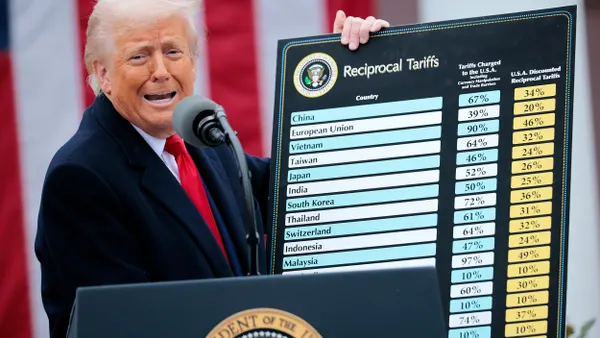Dive Brief:
- More ad fraud will be stopped this year than will succeed, according to the fourth "Bot Baseline" report from security firm White Ops and the Association of American Advertisers (ANA). Fraudsters still try to impact 20% to 35% of all ad impressions, the report said, but — for the first time — most of these efforts are being nullified by demand-side platforms and supply-side platforms.
- Economic losses from ad fraud are expected to reach $5.8 billion globally, which is less than the $6.5 billion in the previous study, released in 2017, even though digital ad spending increased by more than 25% between that earlier report and now. Fifty ANA member companies participated in the study, and White Ops worked with brand advertisers and their agencies to examine 2,400 campaigns.
- The findings suggests that "the war on fraud is winnable," said ANA CEO Bob Liodice. Key assets in the war on fraud have included the IAB Tech Lab's Ads.txt method for reducing fraudulent inventory, certification by the industry group Trustworth Accountability Group (TAG) and efforts to dismantle botnets.
Dive Insight:
This is not the first time that ANA and White Ops have declared that the war against ad fraud is winnable. They said the exact same thing in their 2017 report. The ANA/White Ops report suggests that the many anti-fraud efforts in the industry are beginning to have an effect, but the picture isn't all rosy.
On the inventory side, the IAB Tech Lab's ads.txt is now widely adopted, making it harder to misrepresent premium ad space. Additionally, most ad buying platforms are utilizing outside verification services or their own proprietary efforts to reduce the instance of fraudulent buyers, per the ANA/White Ops report.
The report points out that "independent fraud prevention measures," such as from third-party verification services or TAG, were not available at the time of its original study in 2014. Ninety percent of the ad buyers in this current report have Media Research Center (MRC)-accredited fraud verification measures in place.
Another factor has been arrests, including ones of the alleged masterminds behind the 3ve and Methbot operations, per the report. For the top quintile of advertisers, the report stated, "fraud was nearly nonexistent."
Some recent studies have supported this increasingly optimistic tone. A report last November from industry group TAG, for instance, found an 84% reduction in fraud from invalid traffic through platforms that had received the TAG certification. Countering this good news are reports indicating that mobile ad fraud is growing quickly.
But the ad fraud industry is one of the most resourceful and adaptive ones on the planet, and the report cautions against slacking off. It notes that "outdated media formats" like VAST 2 can't support the most rigorous third-party validation, and there are still discrepancies between ad server impressions and validated impressions.
Interestingly, the ANA/White Ops report doesn't make any mention of blockchain-based efforts to counter fraud, which have gained momentum in the last year in a variety of efforts by startups and by established brands like IBM and Mediaocean.
In February, blockchain startup Lucidity announced results of a field test that painted a different picture than the sunny outlook from the ANA/White Ops report. It found that 14% of impressions on desktop, mobile web and in apps could not be verified. For in-app impressions by themselves, only 65% could be confirmed, and, for all ad clicks on all platforms in the tracked campaigns, only 52% could be confirmed.











